
Cracking the Linotype Printing Code
Unlocking the secretive code used for Linotype publications
Published: 11 Oct 2023
Topics: Linotype, Typography, History
TL;DR: Now that I understand the code, I’m able to date most Linotype ephemera
The Mysterious Publication Code
I’ve been collecting Linotype materials and specimen books for over a decade since making “Linotype: The Film.” From the beginning, I realized not all printed pieces were dated, which is frustrating for a self-proclaimed typographic historian. I often asked,
- When was something printed?
- When was a specific update made to a typeface or machine?
- Which piece of ephemera was released first?
Interestingly, most of the ephemera had a mysterious mix of numbers and letters printed in small type, somewhere on the back cover or first page. I assumed it was some sort of internal code of when it was printed, but I could never figure it out.
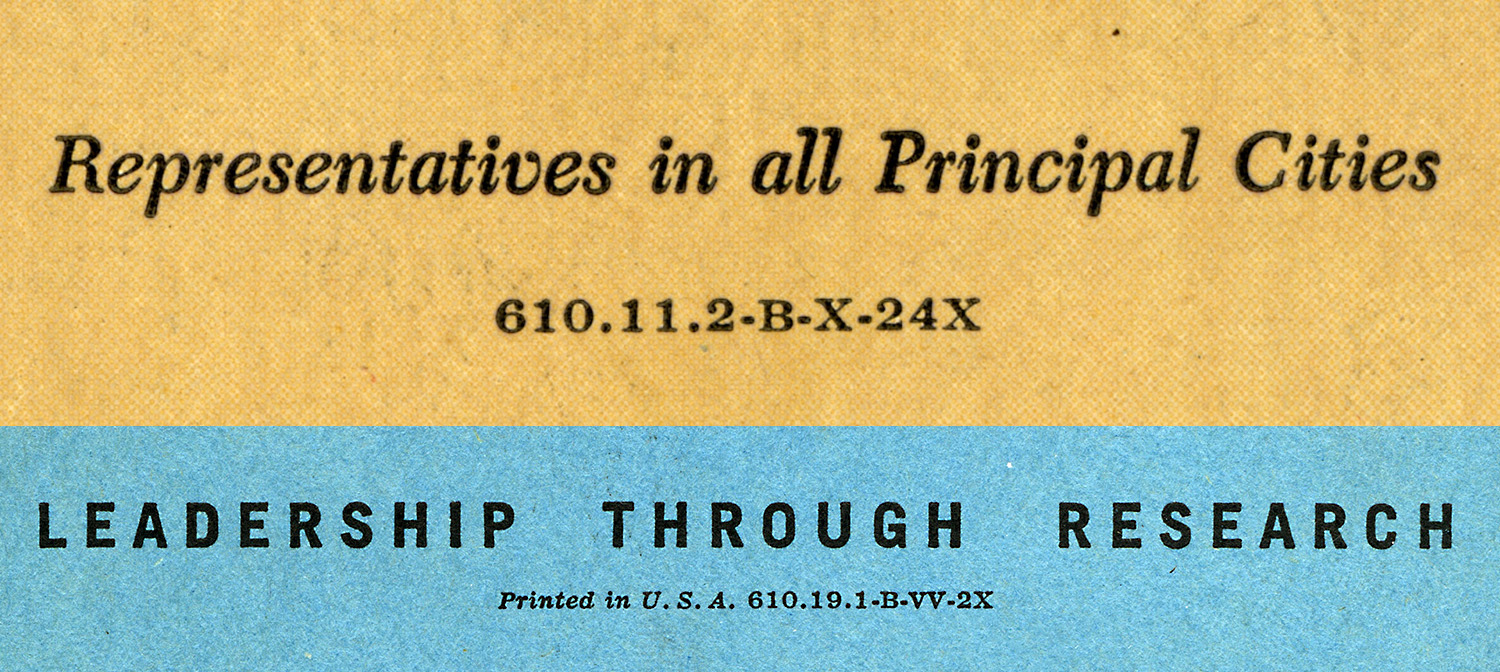
Cracking the Code
So naturally, I was thrilled to recently receive an email from Jim Gard of the San Jose Printers’ Guild, sharing that he had worked with David MacMillian to crack the code back in 2012!
“Before I forget, I’m the guy who cracked the Linotype publication code — specifically the date that a Mergenthaler Linotype document was printed was encrypted into combination of letters that represented the month and year of printing. Using documents that also had their month and year elsewhere such as newsletters, I was able to reverse engineer the lettered date code.” – Jim Gard
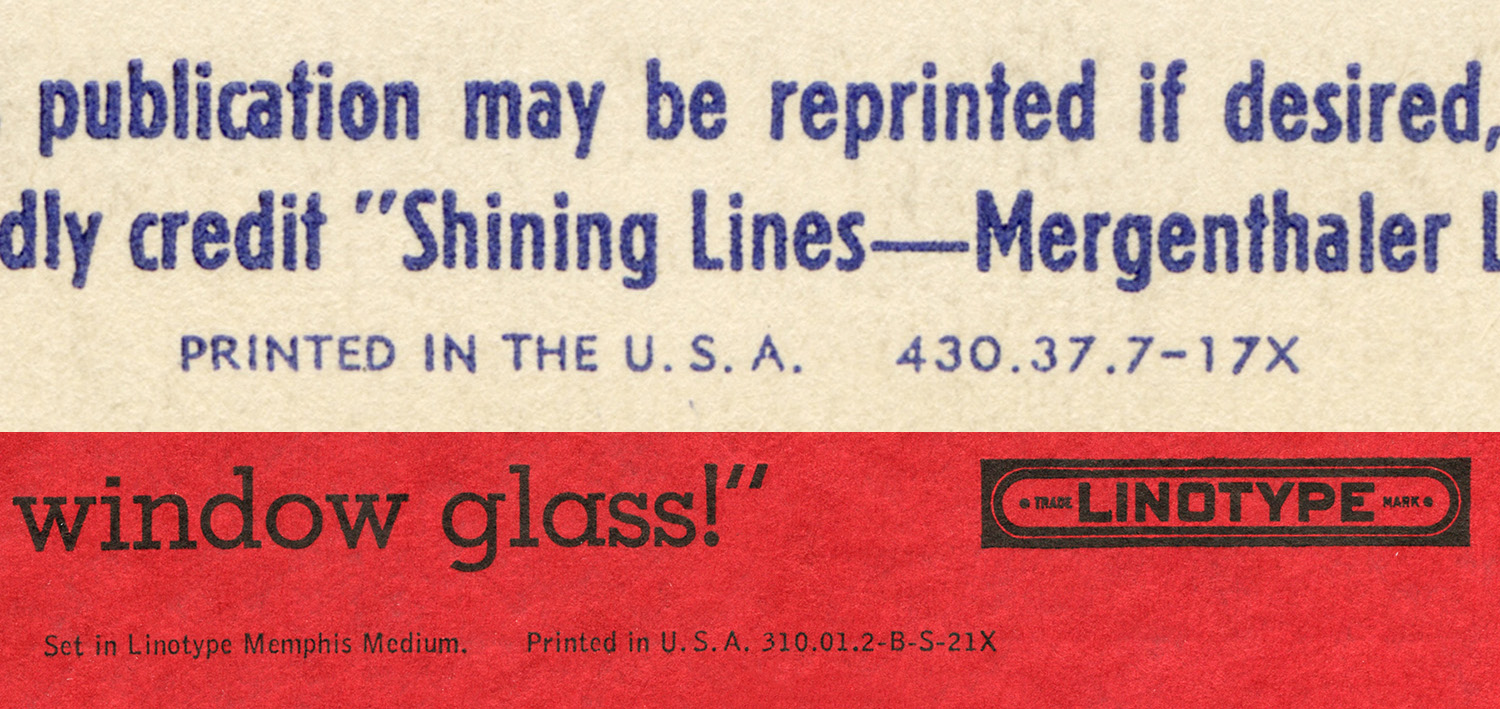
How the Code Works
The code is simple—once you understand they started with M in 1934 to indicate the year of printing. Jim’s theory is they started with M for “Mergenthaler” which seems plausible, but we can’t find anything to confirm.
When they got to Z in 1948, they started again with MM until they got to ZZ in 1961, where they stopped using the code and simply printed the year. The month of printing is alphabetical; using A for January and ending with L for December.
I hope the table below is useful for future researchers as well as the casual, curious collector wanting to date their ephemera.
| Code | Month | Code | Date | Code | Date | ||
|---|---|---|---|---|---|---|---|
| A | January | M | 1934 | MM | 1948 | ||
| B | February | N | 1935 | NN | 1949 | ||
| C | March | O | 1936 | OO | 1950 | ||
| D | April | P | 1937 | PP | 1951 | ||
| E | May | Q | 1938 | 1952 | |||
| F | June | R | 1939 | RR | 1953 | ||
| G | July | S | 1940 | SS | 1954 | ||
| H | August | T | 1941 | TT | 1955 | ||
| I | September | U | 1942 | UU | 1956 | ||
| J | October | V | 1943 | VV | 1957 | ||
| K | November | W | 1944 | WW | 1958 | ||
| L | December | X | 1945 | XX | 1959 | ||
| Y | 1946 | YY | 1960 | ||||
| Z | 1947 | ZZ | 1961 |
The Other Numbers
I also asked about the numbers in front of the publication code and here is what Jim had to say:
“The first number is the type of document, e.g. manuals are 610; parts books are 741; specimen books; 310, 311. I think the last number in the code might have been a printing quantity, possibly encrypted or in 100s or 1000s, often a number followed by X or M—but I’ve never spent much time trying to crack that code.”
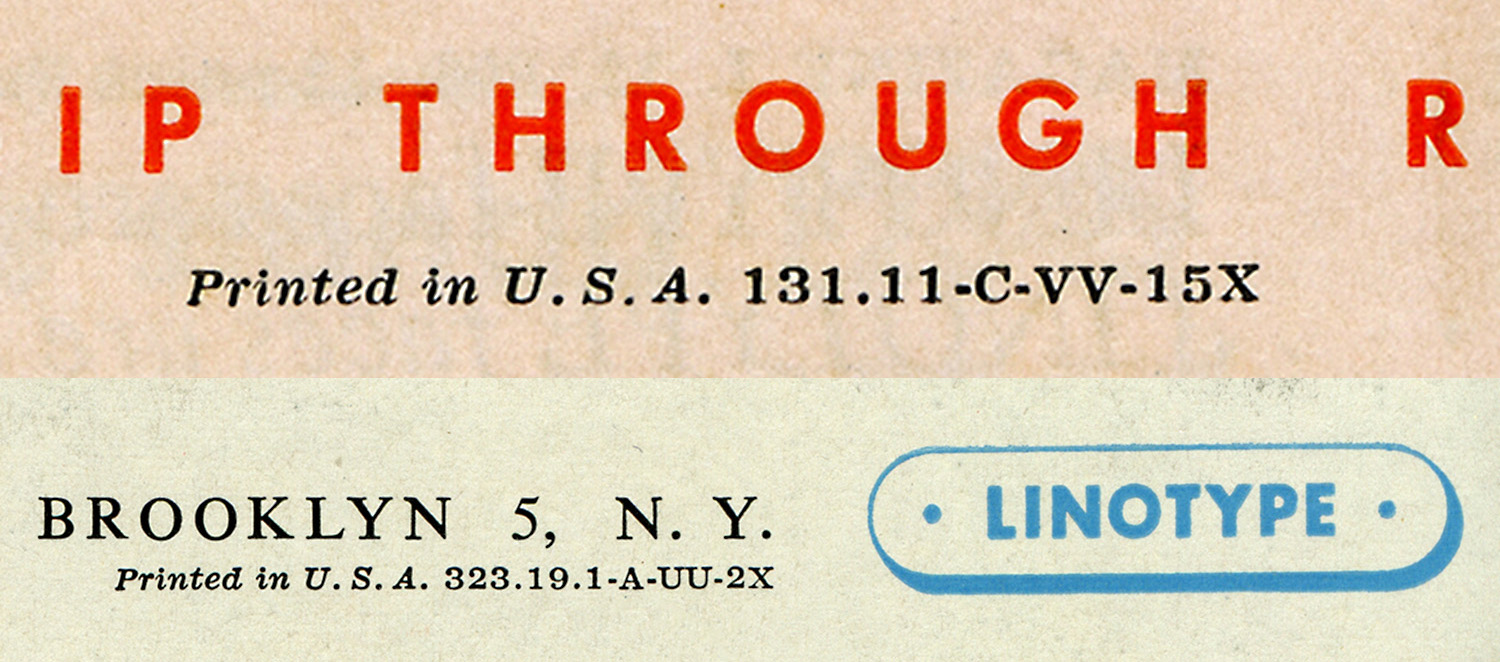
Jim continues, “The final “dot number” indicates revision level, and is absent for the initial version (no revisions yet). So ‘610.11’ is the initial version, ‘610.11.1’ will be the first revision, (thus second edition) and so forth.”
Nov. 2025 Update!
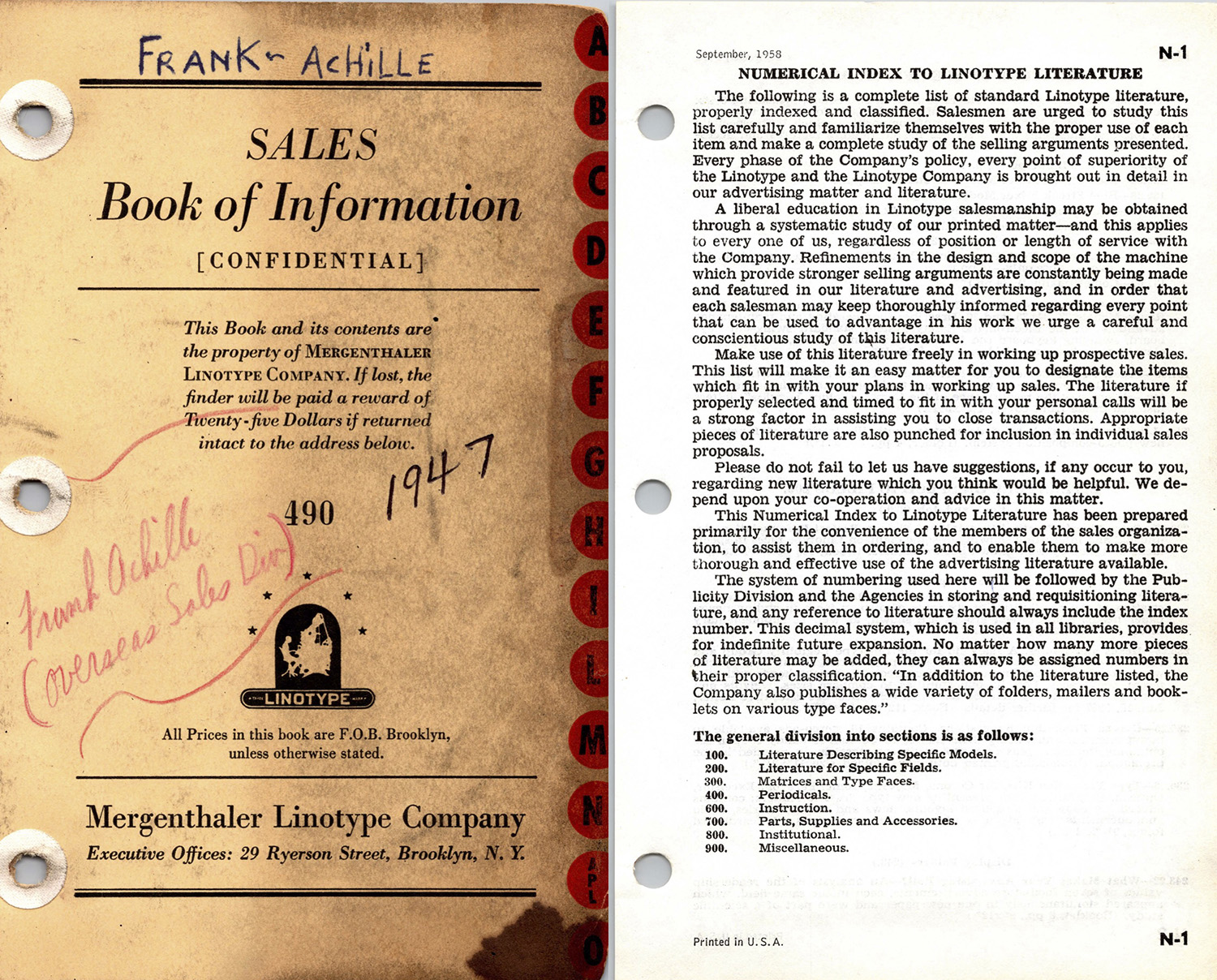
Traveling Linotype repairman, Dave Seat recently shared a “Sales Book of Information” from 1947, which was handed out to all Linotype salespeople around the world. This information was highly confidential and right on the cover, Mergenthaler Linotype Company says they would pay a $25 reward if the book was found and returned.
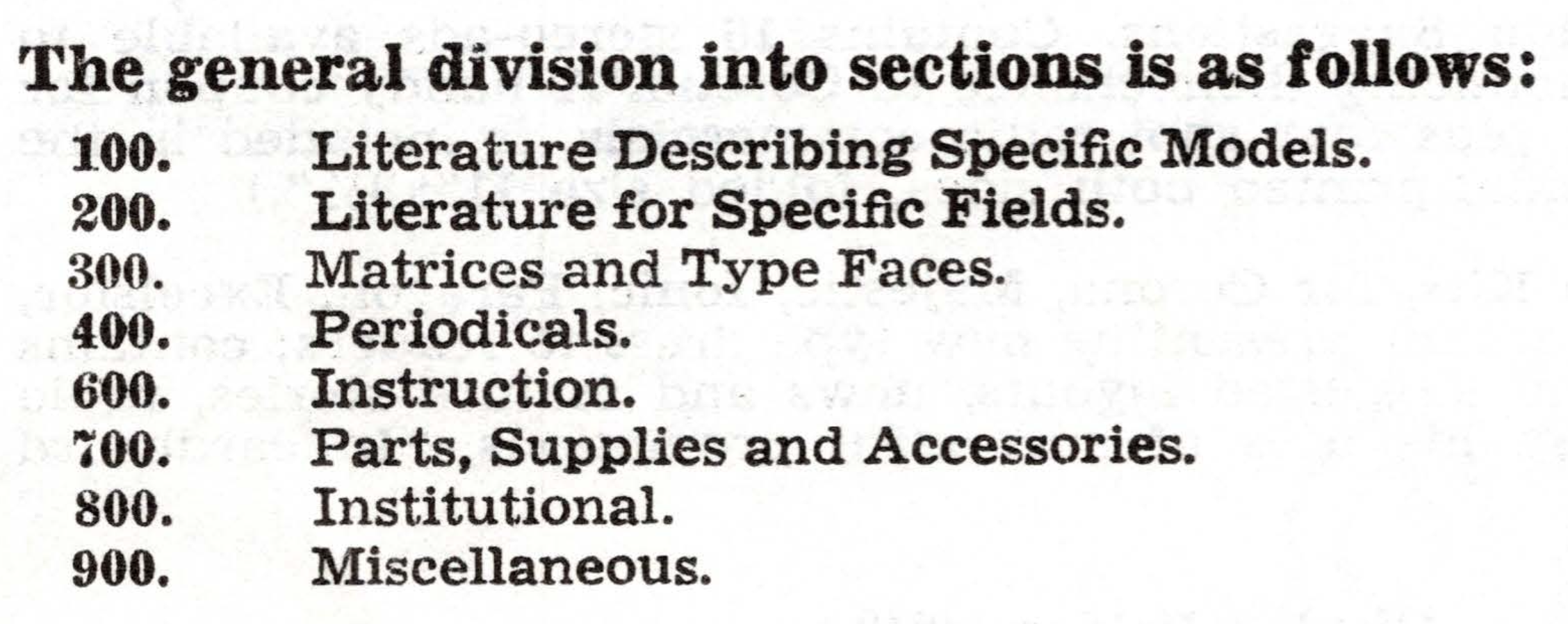
Dave recently let the fine folks at the Museum of Printing to scan and re-print the 3-ring binder as a spiral-bound book (which was generously sent to me). Inside, one of the pages clearly states the division of what type of publications were numbered with what numbers. It’s great to see how Jim’s observations above were fairly accurate.
| Code Number | Section Description |
|---|---|
| 100 | Literature Describing Specific Models |
| 200 | Literature for Specific Fields |
| 300 | Matrices and Type Faces |
| 400 | Periodicals |
| 600 | Instruction |
| 700 | Parts, Supplies and Accessories |
| 800 | Institutional |
| 900 | Miscellaneous |
Yet Another Mystery Surfaces?
While I was recently researching for my book project at St. Bride Library in London, I came across this handwritten pencil note on the inside of a box of materials of yet another printing code that I believe is for ephemera printed by Linotype & Machinery, the British Linotype manufacturing company.
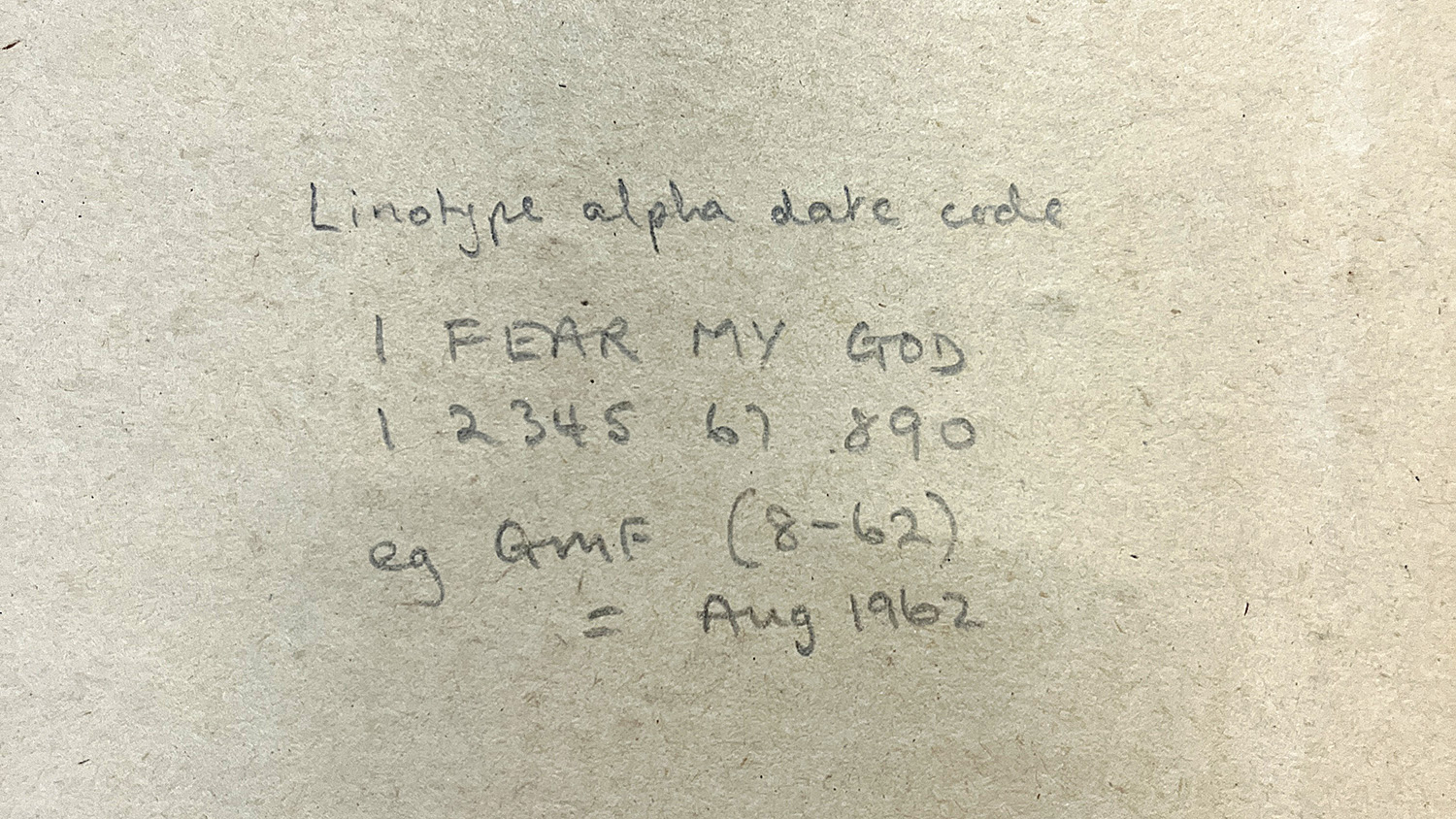
I don’t have a great deal of L&M materials in my collection but strangely, of the approximately 12 books and booklets I own, only two of them follow this code: one from 1937 and one from 1962. So, I guess as I solve one mystery, I uncover another one?
If anyone out there has British Linotype materials with a code that matches this, please reach out to me.
This is Why the Internet is Great

Very recently, I started a “Full Mergenthaler Linotype Company Publication List” spreadsheet to organize and document all of the printed material the U.S. company printed during its lifetime of 120+ years. Being able to pinpoint dates of publications has added tremendous value and insights already.
So, thanks again to Jim for cracking the code and Dave Seat for allowing the MOP to scan this exceptionally rare and helpful document.

